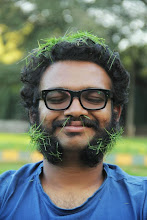We arrived in Dimapur early on
the morning of 28th November. How early? Well, it was 5 when we
stepped out of Dimapur station and were hounded by cabbies who wanted to ferry
us to Kohima right away. We had spoken to a member of the Rotaract Club of Dimapur
but we were supposed to call another number at ten in the morning. What would
we do for five hours? And what if we still didn’t have a host after that phone
call?
We checked into Hotel Maple,
something we had found the night before, online. They gave us a single room
with a single bed, promising to upgrade as soon as there was more space. After
an uncomfortable sleep (read Anthony’s wheezing and my snoring and a few
million power cuts) we decided to step out of the depressing room and go out.
So in Nagaland, the sun wakes up
early and by ten it feels like 2 pm in Mumbai, bright and sunny. We ambled
slowly through the market area, looking at shops, reading signboards and trying
not to stare at the very pretty Naga women (Statement: Naga women are very
pretty!). I have been craving to have some south Indian breakfast for a long
time now and my tongue fell on the ground when I saw a board that said Dosa
Plaza. I almost dragged Anthony along to find this place when we accidentally
saw Café 77.
It looked like a good breakfast
place with a graffiti name plate and all. So I killed the dosa dream right
there and walked into the café only to be welcomed by the smell of amazing
coffee. A little part of the South Indian in me got satiated there.
As we order breakfast, we see a
stand that props up a magazine called GreenCache. I pick it up. It’s good and
it’s only their first volume! Crisp pictures, amazing sequential stories and
illustrations. I learnt a lot from that one magazine than a lot of Biology
lectures in college. I quickly wrote a mail to the magazine, introducing
ourselves and telling them how we liked their magazine. Next, I called a number
that was on the panel.
Sentinaro Alley, who picked up
the phone patiently listened to everything I had to say. Then, she introduced
herself as the publisher and promised to meet us at Café 77 in another hour.
What happened next is straight
out of a dream. Sentinaro came, we spoke, she rang up a few numbers and three
hours later, we were in a cab to Kohima with five pine saplings that she
sponsored!
We are now in Kohima, where
Richard Belho is hosting us in one the many bamboo houses he has. Richard is an
architect. He’s also one of the many forces behind the Kohima Komets – a football
team. His dream is to see Nagaland’s Under 19 football team kick the posterior
of India’s national team. He believes this will make the authorities comprehend
the immense potential in the youth in the state.
Richard, along with help from a
lot of people like Bazo Kire and all of his colleagues, is now setting up a
football academy which will serve as the home ground for the Kohima Komets. Project
35 Trees planted ten trees in Meriema Village, where the academy will soon come
up. We wish the Kohima Komets and the forces behind them all the best! We can’t
wait to see them in action!
Anthony loves the food here. Yesterday,
he had one of those green piggies from Angry Birds. Today he devoured a distant
relative of Donald Duck. As for me, I am glad I’ve started eating eggs and that
my hosts generously make me an omlette for lunch and dinner.
We just heard news that there’s a
bandh in Imphal. If that’s true, it means we will still be in Kohima when the
Hornbill Festival begins!





